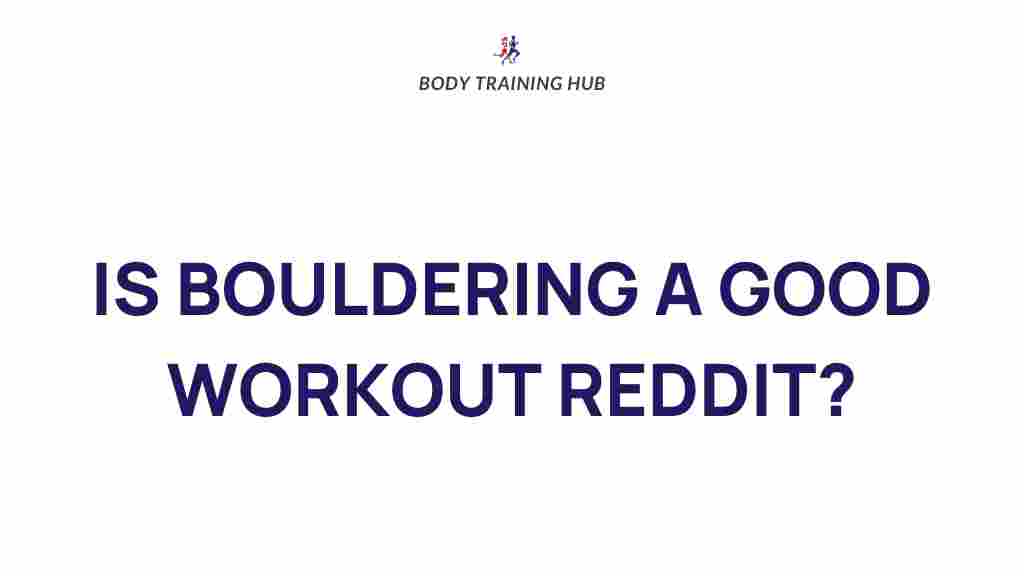Unveiling the Fitness Benefits of Bouldering
Bouldering is an exhilarating form of rock climbing that emphasizes strength, endurance, and technique without the need for ropes or harnesses. As a growing fitness trend, it not only challenges your physical capabilities but also offers a range of benefits that can enhance your overall fitness regime. In this comprehensive guide, we will explore the numerous fitness benefits of bouldering, how it compares to traditional workouts, and why it should be a key component of your exercise routine.
The Rise of Bouldering in Fitness Culture
Over recent years, bouldering has gained immense popularity in gyms and outdoor settings. This climbing style focuses on short, powerful ascents on smaller rock formations or artificial walls, typically not exceeding 15 feet. The absence of ropes makes it accessible and appealing to many fitness enthusiasts. Moreover, bouldering serves as an excellent workout that engages various muscle groups while also enhancing your mental agility.
Key Fitness Benefits of Bouldering
Engaging in bouldering offers a plethora of fitness benefits that can transform your workout routine:
- Muscle Strength: Bouldering requires the use of multiple muscle groups, including the arms, legs, back, and core. Regular practice can lead to significant muscle development and increased overall strength.
- Endurance Training: Climbing requires sustained effort, which effectively builds muscular endurance. As you climb longer and tackle harder problems, your stamina improves.
- Flexibility: The dynamic movements involved in bouldering enhance flexibility, as climbers often find themselves in various positions that require stretching and reaching.
- Coordination and Balance: Bouldering challenges your body’s coordination and balance. Successfully navigating a boulder problem requires precise movements and body control.
- Core Strength: A strong core is essential for maintaining body tension while climbing. Bouldering heavily engages your abdominal muscles, promoting core development.
- Mental Benefits: Bouldering is not just a physical workout; it also requires problem-solving skills and mental focus. Overcoming challenges boosts confidence and mental resilience.
How to Get Started with Bouldering
Starting your bouldering journey is straightforward. Here’s a step-by-step guide to help you begin:
- Find a Local Gym or Outdoor Area: Look for climbing gyms that offer bouldering walls or search for outdoor bouldering locations. Many cities have dedicated climbing facilities that cater to beginners.
- Get the Right Gear: While bouldering can be done with minimal equipment, investing in a pair of climbing shoes enhances your grip and footwork. A chalk bag is also useful for keeping your hands dry.
- Warm-Up Properly: Before you start climbing, it’s crucial to warm up your muscles. Spend 10-15 minutes doing dynamic stretches and light exercises to prevent injuries.
- Start with Easy Problems: Begin with beginner-friendly boulder problems (often graded V0-V1) to build your confidence and technique. Gradually progress to more challenging routes as you improve.
- Practice Falling Safely: Learning how to fall correctly is essential in bouldering. Practice falling onto the crash pads and rolling to minimize impact.
- Join a Community: Connect with other climbers, whether in a gym or through local clubs. This can provide motivation, tips, and a supportive environment to enhance your bouldering experience.
Integrating Bouldering into Your Fitness Routine
To maximize the fitness benefits of bouldering, consider integrating it into your existing workout routine. Here are some tips:
- Combine It with Strength Training: Pair bouldering sessions with strength training workouts targeting major muscle groups. This will enhance your climbing performance and overall strength.
- Incorporate Cardio: Maintain cardiovascular fitness by including activities such as running, cycling, or swimming in your weekly routine alongside bouldering.
- Cross-Training: Engage in other forms of exercise, such as yoga or pilates, to improve flexibility and core strength, which are beneficial for climbing.
- Set Goals: Establish clear goals for your bouldering sessions, such as completing certain routes or improving your technique. This will keep you motivated and focused.
Troubleshooting Common Bouldering Challenges
As with any sport, beginners may face challenges when starting bouldering. Here are some common issues and how to overcome them:
- Fear of Falling: It’s normal to feel apprehensive about falling. Practice falling techniques on easier problems and gradually build your confidence.
- Injury Concerns: To prevent injuries, always warm up, listen to your body, and take breaks when needed. Consult with a coach or instructor if you’re unsure about your technique.
- Difficulty in Finding Foot Holds: If you’re struggling with foot placements, focus on improving your footwork. Practice climbing with an emphasis on precise foot placements.
- Plateauing Progress: If you find yourself stuck at a certain level, consider working with a coach or joining a class to receive personalized tips and guidance.
The Importance of Recovery
Recovery is a crucial aspect of training, especially in a physically demanding sport like bouldering. Here are some recovery tips:
- Rest Days: Allow your body adequate rest between climbing sessions to recover and rebuild muscle.
- Hydration and Nutrition: Stay hydrated and maintain a balanced diet rich in protein, carbohydrates, and healthy fats to support muscle recovery.
- Stretching and Foam Rolling: Incorporate post-climbing stretching and foam rolling to alleviate muscle soreness and maintain flexibility.
Conclusion
Bouldering is not just an exciting sport; it is a comprehensive fitness workout that can significantly enhance your strength, endurance, and overall physical well-being. By incorporating bouldering into your fitness routine, you can enjoy a unique and engaging form of exercise that challenges both your body and mind. Remember to start gradually, listen to your body, and enjoy the journey of climbing. Whether you’re a beginner or an experienced climber, the fitness benefits of bouldering are vast and rewarding.
For more information on fitness and climbing, check out this comprehensive guide. If you’re interested in learning more about training techniques, visit an external resource for expert insights.
This article is in the category Strength & Recovery and created by BodyTraining Team
